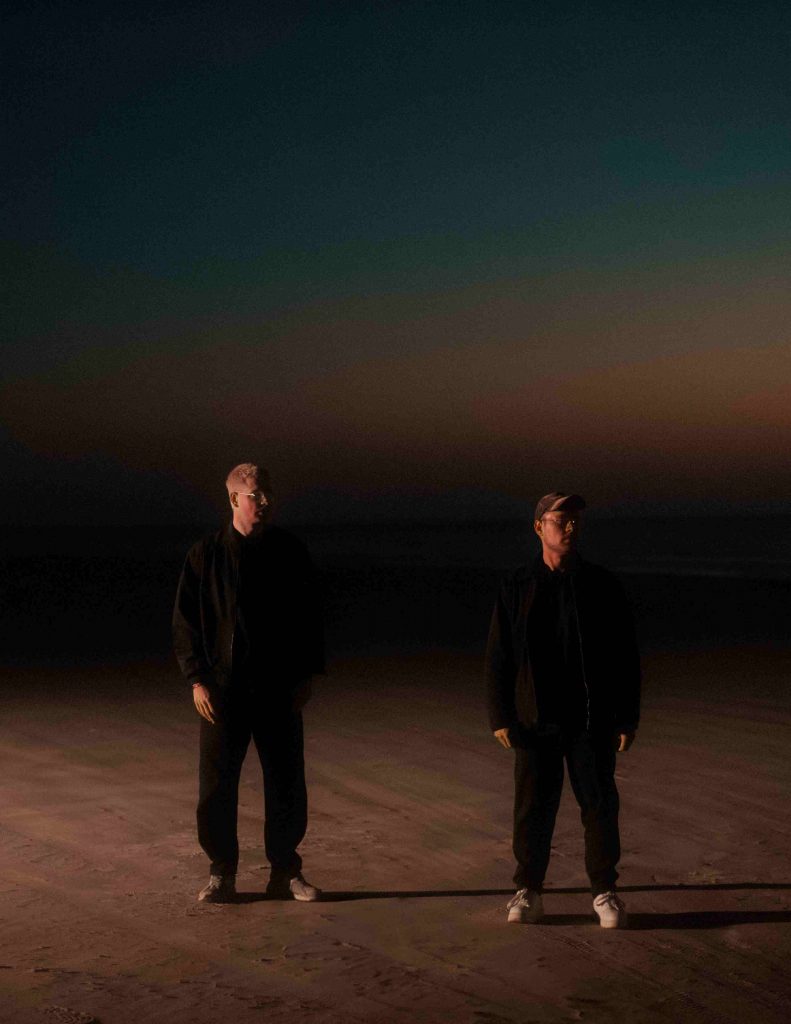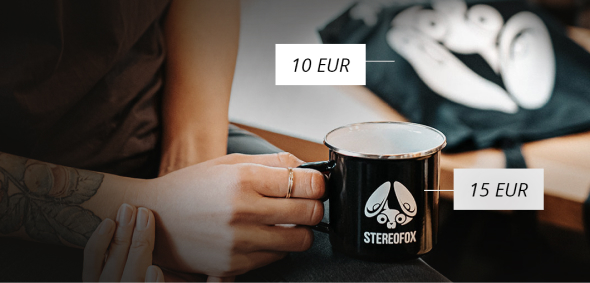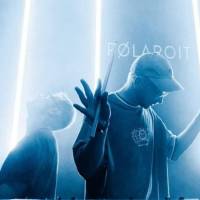The downtempo/electronica scene is one we’ve proudly supported and spotlighted for years. With the influences of techno, melodic house, and organic orbiting their aesthetic, pølaroit is one of the forerunners of this scene with their distinctive style. The duo is made up of Jonas and Marius, two friends shaped by the vast coastal landscapes of Northern Germany, where its mist, wind, and distant tides have become sonic textures for pølaroit. This has led to a sound that meanders between tranquil and energizing, where it's possible to be introspective yet wholly moved on the dance floor.
Releases on Deutsche Grammophon, Stil vor Talent, and Ki Records, as well as collaborations with Cercle - live session of "Backwaters" in India - have brought their music to a global audience. I can't neglect to mention how they've uplifted rising talent through the launch of their label NORR, a platform gradually becoming a home for forward-thinking electronica. One of the upcoming releases on NORR is actually their own, and it's titled how to disappear. Here, pølaroit introduces a groundbreaking chapter in their musical journey. With the help of Canea Quartett and Abbott, the duo merges melancholic electronic soundscapes with a rich classical influence through string quartet embellishments and glossy piano arrangements. In this interview, pølaroit takes us through the process of making how to disappear and reflects on their impactful career.
What do you think it is, both creatively and personally, that makes you two work so well together as a duo?
We have a good way of sharing the work. We both understand the whole process, but we still have our own strengths. So when one of us gets stuck, the other can jump in. That really helps to keep things moving and makes working together feel easy and natural.
In which way has growing up in Hannover had an impact on you as artists? And how has traveling expanded or shifted that foundation?
Stay up to date.
New music and exclusive updates in your inbox weekly.
We actually grew up in the countryside near Hannover. There’s a lot of freedom there, and not so much pressure or competition, so it was a great place to explore music and find our own path. Now we live in the city, but compared to bigger places like Berlin or Munich, it still feels calm and familiar. We love the energy and inspiration we get from travelling and being in big cities, but after a few days, we’re always happy to come back home.
Along the way in your journey, did the dream of living off your music begin to feel like a reality?
Right now, we’re working on so many different projects with pølaroit that there wouldn’t even be time for another job. Especially when we’re on tour, it really hits us like, this is actually our job now! 😄 It’s a wild but amazing feeling.

Cercle is known for spotlighting artists in a powerful way. How did that performance affect your trajectory - whether in terms of reach, recognition, or your own artistic confidence?
Cercle definitely helped us reach a more international audience. Since the release, we’ve been travelling to places like India every year, and we keep meeting new people who share beautiful stories about how they connect with our music. It was a big step for us. Not just in terms of visibility, but also because it placed us alongside artists we really admire. That gave us a sense of belonging and showed us that we’re on the right path.
What inspired the decision to veer towards classical music on your upcoming project, particularly in this stage of your career?
The idea of blending neo-classical and electronic music was actually on our minds even before we started pølaroit. Jonas has a classical background, while Marius has been producing electronic music for a while, so from the very beginning, it felt natural to bring those two worlds together. This upcoming project feels like the right moment to lean more into that classical side and explore it more deeply, while still keeping the electronic elements that are part of our sound.
Could you share some of the challenges that came with changing your workflow and working with a string quartet?
Virtual instruments sound very different from real musicians, so at the start of composing, we had to imagine how the strings would actually sound. Then we sent our first ideas to our friend Thomas (Abbott), who worked with the string quartet and sent us back new versions. We went back and forth like this for a while, which was sometimes tricky because you never really know exactly what the other person meant with their ideas. After the recording sessions, mixing was another big challenge. We didn’t expect it to be so tough to combine real string recordings with our electronic sounds — it meant carefully making space for everything to fit together. But in the end, we learned a lot from the whole process!
What was it about "Where the Waves Fade" that made it the ideal first single to introduce how to disappear?
We thought about the single releases for a long time. "Where the Waves Fade" has such a strong intro — it immediately shows that this is a special project. But then it also drops and becomes more danceable, which gives it a good balance. In a way, it sums up the whole How to Disappear EP really well. The second single, "A Thread", is a bit closer to what people might know from our earlier releases. And there are even 1–2 tracks on the EP without drums at all — so Where the Waves Fade felt like the right first step into this new sound.
What was the atmosphere like in the room when working with Canea Quartet and ABBOTT, and how would you describe the creative chemistry between you?
The day before the recordings, we were already in the studio rehearsing all the songs with the quartet. Marius and I (Jonas) were sitting at the mixing desk, only hearing everything through the room mics, and even that already felt so powerful. We immediately noticed how much more emotional and alive it sounded compared to our demos, even though those already felt great with the virtual instruments! The atmosphere was super warm and familiar. ABBOTT and the Canea Quartet already knew each other, and the recording engineer had worked with all of them before, too. You could really feel that everyone was not only excited about the recordings, but also just happy to be creating something together. It was really special to witness that.
Are there any particular habits, tools, or tricks you have picked up lately that have had a positive impact on your creative process?
Recently, we heard a sound in a track from a completely different genre and really wanted to recreate it. That moment sparked something, and it quickly turned into a new song. In general, we think it’s super helpful to look outside your own genre for inspiration. There’s so much great music out there beyond the scene you’re used to, and we believe that’s how music keeps evolving.
What does playing live give you that producing in the studio can't?
In the studio, you can only imagine how a drop might feel — but playing it live is always different. That moment when a song finally drops in front of a crowd has a completely unique energy. Every audience reacts in their own way, and that makes each show exciting and new. Back in the studio, you’re kind of working with memories of those moments, but nothing can fully replace the feeling of being there live.
In your opinion, what makes an unforgettable show, as a performer, and as an audience member?
For us, an unforgettable show is when you feel guided from the very first note to the last. The best concerts are the ones where there’s no barrier between the artist and the audience, everyone is fully present in the same space, and the energy builds with every song. By the end, you just want to hug the people around you. That’s exactly how we felt at the last Kiasmos show we went to.
Okay so, 1) an artist/band you’d love to collab with 2) an artist you think would be great to party with 3) an artist you would love to spend a week with in the studio. You’re welcome to select artists who are dead/retired.
Jonas: 1) Ólafur Arnalds 2) Fred Again 3) Jon Hopkins
Marius: 1) Pink Floyd 2) Romain Garcia 3) Weval








